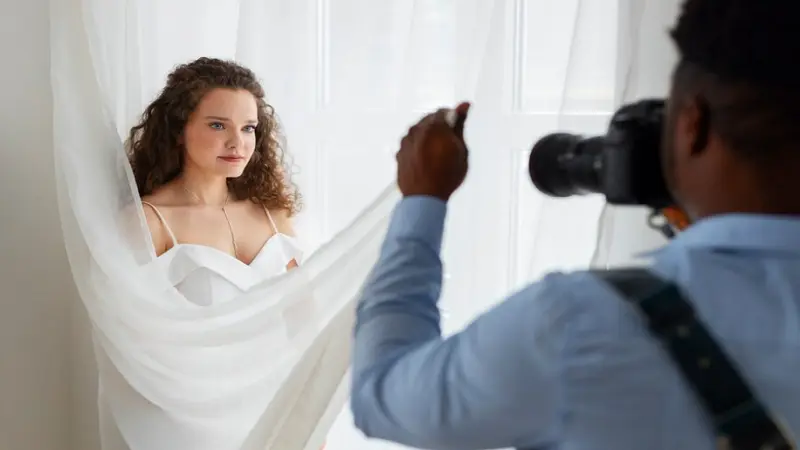Boudoir photography, often associated with modern notions of empowerment and self-expression, has a rich and complex history that spans over a century. Its journey from secretive beginnings to becoming a mainstream form of photography is a tale of societal changes, cultural evolution, and shifting perceptions of beauty and self-representation. For further insights visit www.annphotography.com site. This article delves into the historical journey of boudoir photography, tracing its roots and examining how it has evolved to become a symbol of empowerment and self-acceptance.
The Early Days: Boudoir Photography’s Concealed Origins
Boudoir photography’s origins can be traced back to the late 19th and early 20th centuries, a time when photography was still in its infancy. The term ‘boudoir’ itself, French for a woman’s private sitting room or dressing room, set the tone for the intimacy and privacy associated with this style of photography. Early boudoir photographs were often taken in a woman’s private space, where she could express her beauty and sensuality more freely. However, during this period, these photographs were generally kept private, and shared only between intimate partners, due to the conservative societal norms of the time.
The Roaring Twenties: A Shift Towards Liberal Expression
The 1920s marked a significant shift in the world of boudoir photography, mirroring the broader cultural changes of the era. Known as the Roaring Twenties, this period saw a burgeoning of liberal attitudes towards fashion, sexuality, and women’s independence. Boudoir photography began to reflect this newfound freedom, with more daring and expressive portraits emerging. Women embraced these photos as a form of self-expression and a celebration of their femininity and beauty.
Post-War Era: The Rise of Pin-Up Culture
The post-World War II era and the rise of pin-up culture brought boudoir photography closer to the mainstream. Pin-up models, often depicted in suggestive poses and attire, became widely popular, appearing in magazines, calendars, and advertisements. This era laid the groundwork for the normalization of sensuality in photography, paving the way for boudoir photography to gain more acceptance and popularity.
The Feminist Movement: A New Perspective
The feminist movement of the 1960s and 1970s brought a new perspective to boudoir photography. As the movement challenged traditional gender roles and advocated for women’s rights and freedom of expression, boudoir photography began to be seen as a form of empowerment. It allowed women to take control of their sexuality and representation, using photography as a medium to assert their autonomy and individuality.
The Digital Age: Boudoir Photography’s Renaissance
The advent of the digital age and the rise of social media in the late 20th and early 21st centuries have ushered in a renaissance for boudoir photography. The internet provided a platform for photographers and subjects to share their work with a broader audience, breaking down the barriers of secrecy that once surrounded this art form. Digital technology also made photography more accessible, allowing more people to explore boudoir photography, both behind and in front of the lens. Experience the artistry and empowerment of boudoir photography with j’adore boudoir photography in truckee, ca, capturing your unique beauty and confidence in stunning images.
Contemporary Boudoir: Diversity and Body Positivity
Contemporary boudoir photography is marked by its diversity and embrace of body positivity. No longer confined to traditional notions of beauty, modern boudoir photography celebrates bodies of all shapes, sizes, and ages. It has become a powerful tool for self-acceptance and body positivity, empowering individuals to embrace their unique beauty and challenge societal standards.
The Role of Social Media: Expanding Reach and Breaking Stigmas
Social media has played a pivotal role in the evolution of boudoir photography. Platforms like Instagram and Pinterest have allowed photographers and their subjects to share their work with a global audience, further normalizing and celebrating the art form. Social media has also been instrumental in breaking down stigmas and stereotypes associated with boudoir photography, highlighting its role in empowerment and self-expression.
The journey of boudoir photography from its secretive beginnings to its current status as a mainstream form of empowerment is a testament to changing societal attitudes and the power of self-expression. It has evolved from a private form of portraiture to a celebrated art form that champions individuality, self-love, and empowerment. As societal norms continue to evolve, so too will the art of boudoir photography, with its ability to adapt and reflect the changing landscape of self-expression and beauty.
Boudoir photography’s historical journey is not just about the evolution of an art form, but also about the transformation in how we view and celebrate the human body. It continues to challenge perceptions, empower individuals, and offer a unique lens through which people can see themselves and their bodies in a new, more accepting light.
